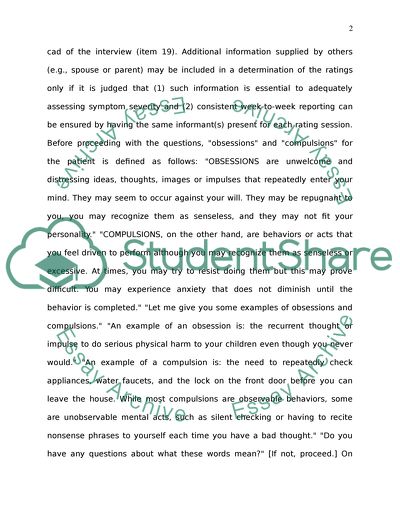Cite this document
(“Yale-Brown Obsessive Compulsive Scale Essay Example | Topics and Well Written Essays - 2250 words”, n.d.)
Retrieved from https://studentshare.org/psychology/1509908-yale-brown-obsessive-compulsive-scale
Retrieved from https://studentshare.org/psychology/1509908-yale-brown-obsessive-compulsive-scale
(Yale-Brown Obsessive Compulsive Scale Essay Example | Topics and Well Written Essays - 2250 Words)
https://studentshare.org/psychology/1509908-yale-brown-obsessive-compulsive-scale.
https://studentshare.org/psychology/1509908-yale-brown-obsessive-compulsive-scale.
“Yale-Brown Obsessive Compulsive Scale Essay Example | Topics and Well Written Essays - 2250 Words”, n.d. https://studentshare.org/psychology/1509908-yale-brown-obsessive-compulsive-scale.


